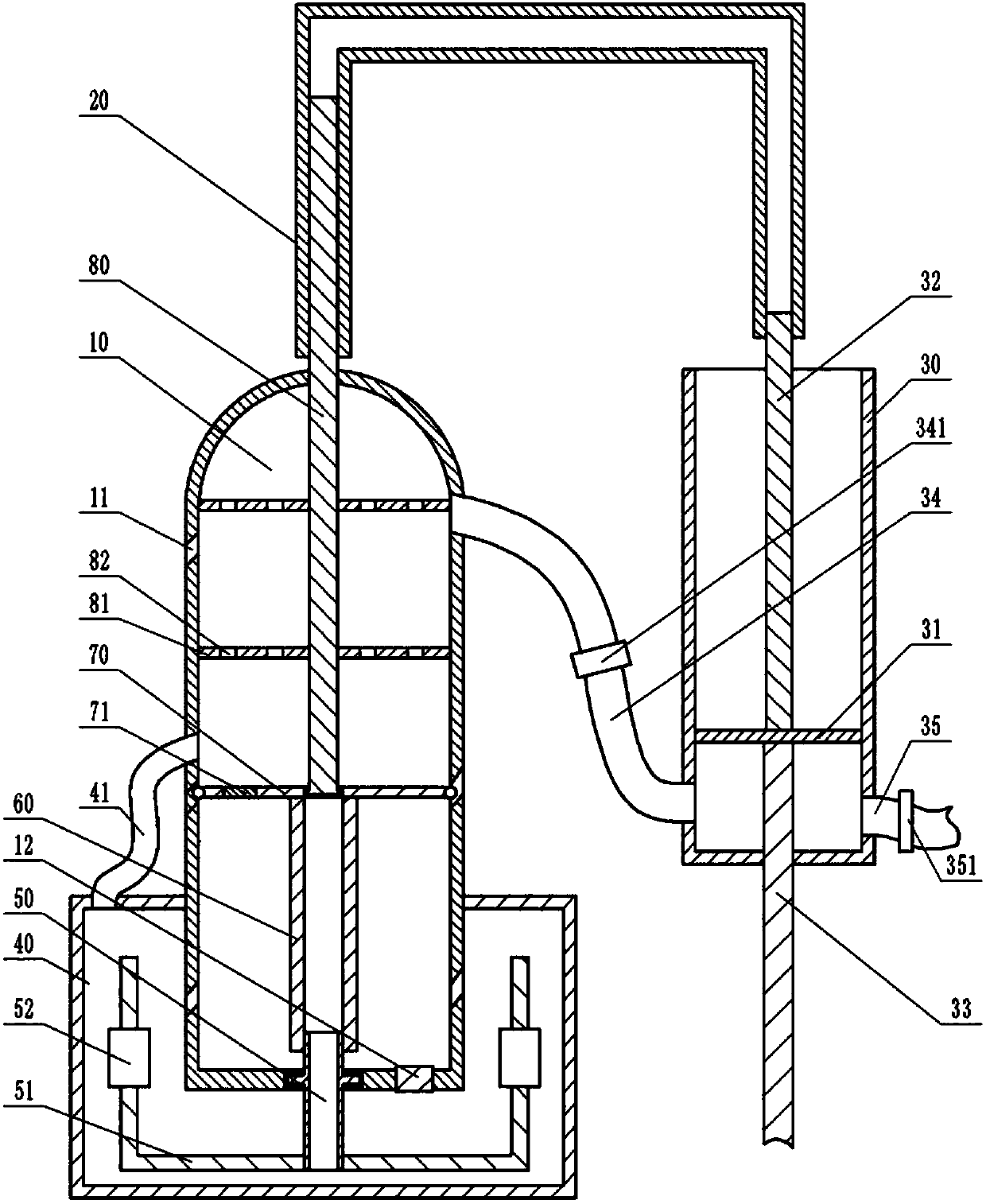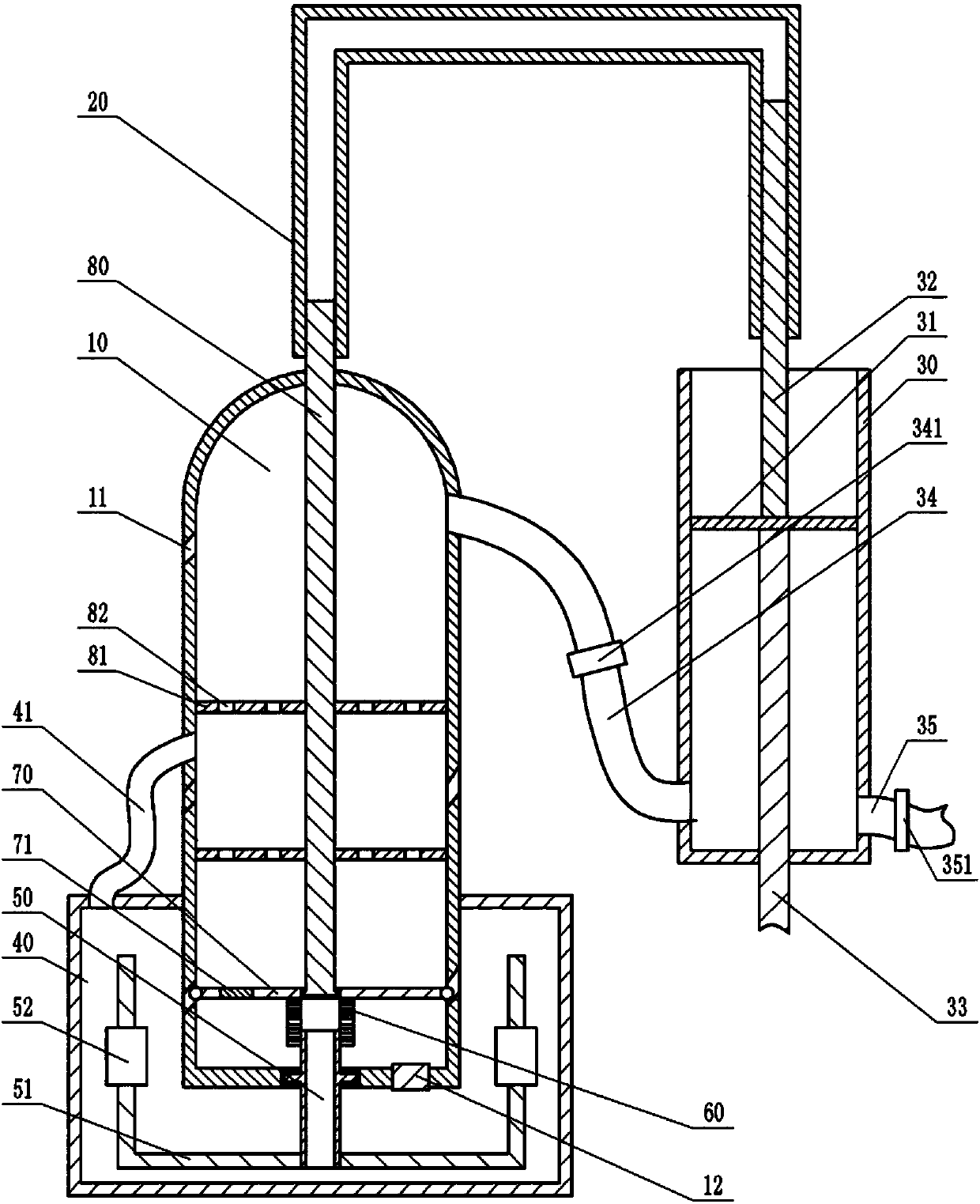Waste solvent oil separation process
A technology for separation of waste solvent and oil, applied in distillation purification/separation, hydrocarbon purification/separation, carboxylate separation/purification, etc., which can solve the problems of secondary pollution, high energy consumption, and poor renewability of water resources. , to achieve a good effect of recycling and separation
- Summary
- Abstract
- Description
- Claims
- Application Information
AI Technical Summary
Problems solved by technology
Method used
Image
Examples
Embodiment Construction
[0024] The present invention will be further described in detail below through specific implementations:
[0025] Instruction attached Figure 1 to 2 The reference signs in include: distillation tank 10, groove 11, pressure valve 12, communicating device 20, storage cylinder 30, piston 31, push column 32, piston rod 33, discharge pipe 34, one-way discharge valve 341 , Feed pipe 35, one-way feed valve 351, intermediate tank 40, exhaust pipe 41, connecting pipe 50, stirring shaft 51, heating device 52, telescopic pipe 60, pressure plate 70, one-way door 71, pressure column 80, Slow flow plate 81, through hole 82.
[0026] A waste solvent oil separation process includes the following steps:
[0027] (1) Distillation at room temperature: Use a distillation device to distill the waste solvent oil at room temperature to obtain a liquid containing xylene and butyl acetate by distillation. Such as figure 1 , figure 2 As shown, the distillation device includes a storage cylinder 30, a com...
PUM
 Login to View More
Login to View More Abstract
Description
Claims
Application Information
 Login to View More
Login to View More - R&D
- Intellectual Property
- Life Sciences
- Materials
- Tech Scout
- Unparalleled Data Quality
- Higher Quality Content
- 60% Fewer Hallucinations
Browse by: Latest US Patents, China's latest patents, Technical Efficacy Thesaurus, Application Domain, Technology Topic, Popular Technical Reports.
© 2025 PatSnap. All rights reserved.Legal|Privacy policy|Modern Slavery Act Transparency Statement|Sitemap|About US| Contact US: help@patsnap.com


